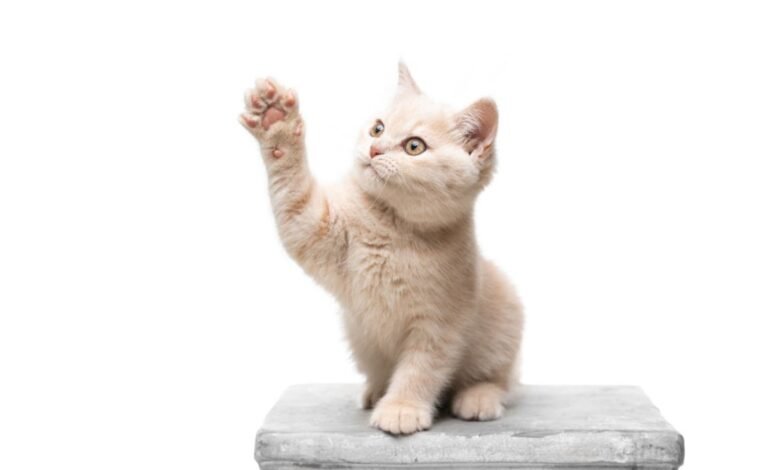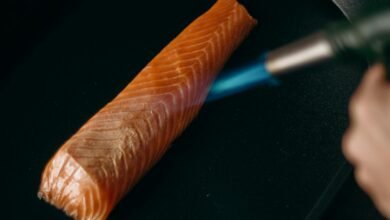How Many Toes Does a Cat Have? Unveil the Mystery!

A cat has 18 toes in total, with 5 toes on its front paws and 4 toes on its back paws. Cats use their toes for balance, climbing, and hunting.
Their claws are retractable and serve various purposes, including defense and catching prey. Cats have a unique ability to walk silently due to their padded paws and specialized toe structure, which also helps them move quickly and with precision. Understanding the anatomy of a cat’s paws and toes can provide insights into their behavior and agility.
So, let’s dive deeper into the fascinating world of cat toes and discover more about these remarkable creatures.
Feline Paws And Toes: A General Overview
Typical Toe Count In Cats
Cats typically have 18 toes in total, with five toes on their front paws and four on their back paws.
Variations Across Breeds
Some cat breeds can have extra toes, a condition known as polydactyly, which can result in cats having up to 28 toes.

Credit: www.petmd.com
The Anatomy Of A Cat’s Paw
How Many Toes Does a Cat Have? A cat’s paw typically has five toes in the front and four in the back, equipped with retractable claws for hunting. The unique anatomy of a cat’s paw allows for balance, agility, and effective gripping.
Cats are fascinating creatures, and their paws are no exception. If you’ve ever wondered how many toes a cat has, the answer is 18. However, there’s more to a cat’s paw than just toes. In this article, we’ll take a closer look at the anatomy of a cat’s paw, including toe structure, function, claws, and digital pads.
Toe Structure And Function
A cat’s paw consists of five toes on the front feet and four toes on the back feet. Each toe has a unique structure and function. The first digit on the front paw, also known as the dewclaw, is not used for walking and can be removed without any harm to the cat. The other toes are used for balance, walking, and running. The toes are connected to the paw by ligaments and tendons, which allow for flexibility and movement. At the end of each toe, there is a claw, which is used for hunting, climbing, and self-defense.
Claws And Digital Pads
A cat’s claws are retractable, which means they can be extended and retracted as needed. This helps to keep the claws sharp and prevents them from getting damaged when the cat is not using them. The claws are made of keratin, which is the same material that makes up human hair and nails. In addition to the claws, a cat’s paw has digital pads, which are soft, cushioned pads on the bottom of each toe. These pads help to absorb shock when the cat jumps or runs and provide traction when the cat is walking or climbing.
In conclusion, the anatomy of a cat’s paw is a fascinating topic, and understanding it can help us better appreciate these amazing creatures. From the toes to the claws and digital pads, each part of a cat’s paw serves an important function and plays a vital role in the cat’s overall health and well-being.
Polydactyl Cats: The Many-toed Felines
Polydactyl cats can have extra toes, unlike regular cats with 18 toes in total. These many-toed felines may boast up to 28 toes, making them unique and fascinating creatures among the cat kingdom.
Historical Significance
In the world of cats, there are some felines that stand out from the rest due to their unique and fascinating feature – extra toes. These cats, known as polydactyl cats, have more toes than the average cat. This physical anomaly has captured the attention of cat lovers and researchers alike, leading to a deeper understanding of the historical significance behind these many-toed felines. Polydactyl cats have a rich history that dates back centuries.
They were first discovered in various parts of the world, including Europe and North America. Sailors believed that these cats brought good luck, and many ships would carry them on board to ensure safe voyages. Ernest Hemingway, the renowned writer, was particularly fond of polydactyl cats and had several of them residing in his Key West home. Today, Hemingway’s home is a museum and sanctuary for these unique felines, further highlighting their historical significance.
Genetics Of Polydactylism
The fascinating aspect of polydactyl cats lies in their genetics. While most cats typically have 18 toes, polydactyl cats can have anywhere from 6 to 8 toes on their front paws and 4 to 6 toes on their back paws. This genetic variation is caused by a dominant gene mutation known as the “Pd” gene. When a cat inherits this gene from one or both of its parents, it results in the development of extra toes.
The Pd gene is not limited to a specific breed and can occur in various cat breeds and mixed-breed cats. Interestingly, polydactylism can appear randomly within litters, making it an intriguing genetic phenomenon. Breeders who specialize in polydactyl cats carefully select and breed cats with the Pd gene to maintain and enhance this unique trait. Polydactyl cats are not only visually distinct but also possess enhanced dexterity and agility due to their additional toes. These extra toes provide them with an advantage when it comes to activities such as climbing, hunting, and even opening doors. It’s no wonder why these many-toed felines have captivated the attention of cat enthusiasts worldwide.
In conclusion, polydactyl cats, or many-toed felines, have a rich historical significance and possess a unique genetic trait that sets them apart from other cats. Their extra toes have not only made them popular among cat lovers but have also contributed to their enhanced abilities. Whether it’s their intriguing history or the genetic marvel behind their extra toes, polydactyl cats continue to fascinate and charm people around the world.
Counting Cat Toes: A Step-by-step Guide
Discover how many toes a cat has with “Counting Cat Toes: A Step-by-Step Guide. ” This comprehensive and easy-to-follow resource provides a detailed breakdown of a cat’s foot anatomy, helping you count their adorable toes accurately. Say goodbye to uncertainty and hello to feline toe counting mastery!
If you’ve ever wondered how many toes a cat has, you’re not alone. Cats have a reputation for being mysterious creatures, and their paws are no exception. While most cats have 18 toes, some cats have more or fewer. In this guide, we’ll take you through the step-by-step process of counting your cat’s toes and identifying the different parts of their paws.
Front Paws Vs. Hind Paws
First, it’s important to know that a cat’s front paws and hind paws are different. A cat’s front paws have five toes, including a dewclaw, which is a vestigial digit located on the inside of the paw. The dewclaw is not used for walking, but it can help cats climb and grasp prey. The hind paws, on the other hand, have four toes and a dewclaw. To count your cat’s toes, start with their front paw.
Gently press down on their paw pad to extend their toes. You should see five toes, including the dewclaw. Count each toe, starting with the one closest to the dewclaw and ending with the one closest to the paw pad. Repeat this process with the other front paw. Next, move on to your cat’s hind paws. Gently press down on their paw pad to extend their toes. You should see four toes, including the dewclaw. Count each toe, starting with the one closest to the dewclaw and ending with the one closest to the paw pad. Repeat this process with the other hind paw.
Identifying The Dewclaw
As mentioned earlier, the dewclaw is a vestigial digit that is not used for walking. It is located on the inside of a cat’s front paw and the back of their hind paw. The dewclaw is often smaller than the other toes and may not touch the ground when the cat walks. Some cats only have dewclaws on their front paws, while others have them on all four paws.
In conclusion, counting your cat’s toes is a simple process that can help you better understand your feline friend. Knowing how many toes your cat has and where their dewclaws are located can also help you identify any potential health issues or injuries. So next time you’re snuggling with your cat, take a moment to count their toes and appreciate the unique features that make them so special.
The Significance Of Toes For Feline Agility
When it comes to feline agility, the number of toes a cat has plays a significant role. Cats are known for their exceptional agility, and their toes are instrumental in contributing to their remarkable movement capabilities. Understanding the importance of toes for feline agility sheds light on the fascinating biomechanics of these graceful creatures.
Balance And Movement
The toes of a cat are crucial for maintaining balance and facilitating swift movements. With their toes providing stability and traction, cats are able to navigate various terrains with remarkable poise and agility. The flexibility and dexterity of their toes enable them to swiftly change direction, demonstrating their unparalleled grace and coordination.
Climbing And Hunting Skills
Cats rely on their toes for climbing vertical surfaces with unparalleled agility. The intricate design of their paws, complete with retractable claws and sensitive toes, empowers them to scale heights with remarkable precision. Additionally, their hunting prowess is greatly enhanced by the ability to silently stalk and pounce on their prey, leveraging their toes for stealthy and swift movements.
Credit: www.quora.com
Common Toe-related Health Issues In Cats
Cats rely on their paws and toes for various activities, including walking, climbing, and hunting. However, just like humans, cats can also experience toe-related health issues. Being aware of these common problems can help you identify and address them promptly, ensuring your feline friend stays happy and healthy.
Injuries And Infections
Accidents happen, and cats are not exempt from toe injuries. They can get their toes caught in doors, sustain puncture wounds from stepping on sharp objects, or experience trauma from falls or fights. Additionally, cats are prone to developing infections in their toes if wounds are left untreated or if they have a weakened immune system.
Common signs of toe injuries or infections in cats include:
- Limping or favoring a paw
- Swelling or redness around the affected toe
- Pain or sensitivity when the toe is touched
- Discharge or pus from the toe
If you notice any of these symptoms, it is important to consult your veterinarian for a proper diagnosis and treatment. Prompt care can prevent complications and help your cat recover quickly.
Nail Disorders
Another common toe-related health issue in cats is nail disorders. Cats’ nails are sharp and strong, allowing them to climb and scratch. However, various conditions can affect the health and appearance of their nails, including:
- Ingrown Nails: When a cat’s nail grows into the skin surrounding the toe, it can cause pain, inflammation, and infection.
- Overgrown Nails: If a cat’s nails are not trimmed regularly, they can become excessively long and curl back into the paw pad, leading to discomfort and difficulty walking.
- Broken Nails: Cats’ nails can break or split, causing pain and potential bleeding. This can happen due to accidents, trauma, or brittle nails.
- Brittle Nails: Certain nutritional deficiencies or underlying health conditions can cause cats’ nails to become brittle and prone to breakage.
If you notice any abnormalities with your cat’s nails, such as overgrowth, ingrown nails, or signs of injury, it is advisable to seek veterinary care. A veterinarian can trim the nails properly, address any underlying issues, and provide guidance on nail care to prevent future problems.
By being aware of common toe-related health issues in cats and taking prompt action, you can ensure your feline companion maintains healthy and happy paws.
Caring For Your Cat’s Toes And Claws
Proper care of your cat’s toes and claws is essential for their health and well-being. Regular maintenance helps prevent issues and keeps your feline friend comfortable.
Regular Maintenance Tips
- Inspect your cat’s paws weekly for any signs of redness or swelling.
- Clean your cat’s paws with a damp cloth to remove dirt or debris.
- Provide scratching posts to help keep your cat’s claws healthy and strong.
Trimming Techniques
- Use specially designed cat nail clippers to trim your cat’s claws.
- Hold your cat securely and trim only the sharp tip of the claw.
- Reward your cat with treats after trimming to create a positive association.
Curious Cases: Record-holding Felines And Their Toes
World Records For Most Toes
Cats with extra toes, a condition known as polydactyly, have gained fame for breaking world records.
One remarkable case is a cat named Jake, who held the record for the most toes on a cat, with a total of 28 toes.
Jake’s polydactyl nature made him a unique and beloved feline, capturing the hearts of many worldwide.
Famous Polydactyl Cats
Among famous polydactyl cats is a feline named Hemingway, residing in the Ernest Hemingway Home and Museum.
Hemingway, also known as a “Hemingway cat,” is renowned for having extra toes and descendants still living on the property today.
These special cats with extra toes have left a lasting impression on cat enthusiasts and history alike.
Frequently Asked Questions
How Many Toes Does A Cat Have?
Cats have a total of 18 toes, with five toes on their front paws and four on their back paws. This includes a dewclaw, which is like a thumb, on each front paw. The number of toes can vary slightly among individual cats.
Why Do Cats Have Different Numbers Of Toes?
Cats can have varying numbers of toes due to genetic mutations. This condition is known as polydactyly, and it can result in extra toes on one or more paws. Polydactyl cats are relatively rare but can be found in certain breeds and populations.
Are Extra Toes On Cats A Genetic Trait?
Yes, extra toes on cats, also known as polydactyly, are a genetic trait that can be passed down from one generation to the next. Polydactyl cats inherit the trait from their parents, and the condition is the result of a dominant genetic mutation.
Do Extra Toes Affect A Cat’s Behavior Or Health?
Extra toes do not typically affect a cat’s behavior or health. Polydactyl cats are generally healthy and exhibit normal feline behavior. In fact, some people believe that polydactyl cats are good luck and are prized for their unique appearance.
Conclusion
Cats have five toes on their front paws and four toes on their back paws. Understanding a cat’s anatomy is essential for their care and well-being. By knowing how many toes they have, you can better understand their movement and behavior.
Keep these details in mind as you care for your feline friend.





